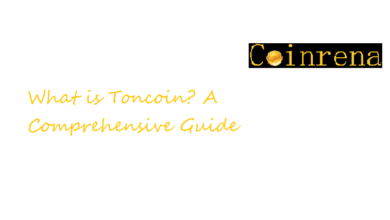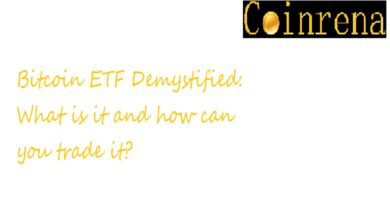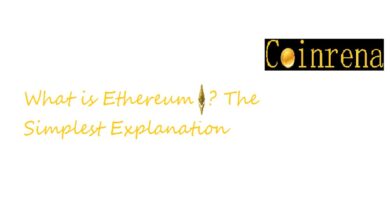Speed, Scalability, and Innovation. Is Solana Worth The Hype?
Solana btrands itself as one of the fatest, most scalable, most innovative ecosystem. Here is a guide to help you decide if its all these

Solana has emerged as one of the most promising and innovative platforms. Launched in 2020, it rapidly gained traction for its high-performance blockchain, offering a scalable solution for cryptocurrencies and decentralized applications (dApps).
However, what exactly is Solana, and what makes it different from other blockchain platforms like Ethereum?
This article will explain Solana’s intricacies and explore its unique features, architecture, use cases, and potential impact on the broader blockchain ecosystem.
The History of Solana
Solana, known as “SOL,” was founded by Anatoly Yakovenko, a former engineer at Qualcomm, whose goal was to address the limitations of existing blockchain networks, particularly speed and scalability.
Yakovenko’s vision was to create a blockchain that could handle thousands of transactions per second without compromising on decentralization and security. This vision led to the development of Solana, a platform that leverages a unique combination of technologies to achieve unprecedented performance levels.
At its core, Solana is a high-performance blockchain that uses a novel consensus mechanism called Proof of History [PoH] unlike traditional Proof of Work [PoW] or Proof of Stake (PoS) systems.
PoH creates a historical record proving that an event has occurred at a specific time.
However, this is achieved by cryptographically encoding time stamps into the blockchain, which allows the network to order and verify transactions independently of block times.
More importantly, this approach dramatically increases the throughput of the network, enabling Solana to process over 65,000 transactions per second (TPS) under optimal conditions. It is a stark contrast to Ethereum, which handles about 15-30 TPS, and Bitcoin, which processes roughly 5-7 TPS. By solving the scalability trilemma–balancing decentralization, security, and scalability, Solana offers a robust foundation for the next generation of dApps.
Key Features of Solana
Proof of History [PoH]: As indicated earlier, PoH is a cornerstone of Solana’s architecture. It aids the network to function efficiently without sacrificing security or decentralization. PoH’s timestamps provide a verifiable order of events.
It makes it easier to reach a consensus without relying on traditional methods that can slow down the network.
Tower BFT: Solana uses Tower Byzantine Fault Tolerance [BFT], an optimized version of the Practical Byzantine Fault Tolerance [PBFT] algorithm. Tower BFT works in conjunction with PoH to reduce latency and increase transaction speed, making Solana one of the fastest blockchains in operation.
Gulf Stream: Gulf Stream is Solana’s protocol for forwarding transactions without relying on a traditional mempool. Instead of waiting for transactions to be included in a block, Gulf Stream enables validators to execute transactions in advance, which reduces confirmation times and further improves network efficiency.
Sealevel: Sealevel is a parallel smart contract runtime that enables Solana to process tens of thousands of contracts simultaneously. This capability is key to Solana’s high throughput and is a significant advantage over other blockchains that process smart contracts sequentially.
Pipelining: Pipelining is a process where different stages of transaction processing are handled simultaneously. Solana’s architecture allows the network to validate and replicate transactions while continuing to receive new ones, ensuring smooth and continuous operation even under heavy loads.
Turbine: Turbine is Solana’s block propagation protocol, which breaks data into smaller packets and sends them to nodes in the network. It hereby reduces the bandwidth needed to transfer data, which makes it easier to scale the network.
Use Cases and Applications
Given its high performance and low fees, Solana has attracted a wide range of applications, from decentralized finance [DeFi] to Non-Fungible Tokens[NFTs] and beyond. They include;
DeFi: Due to its speed and low transaction costs, Solana has become a hub for DeFi projects. Protocols like Serum, a decentralized exchange, have chosen Solana for its ability to handle high-frequency trading and complex transactions at a fraction of the cost compared to Ethereum .
NFTs: The NFT boom has also found a home on Solana, with platforms like Solanart and Magic Eden offering a marketplace for digital art and collectibles. Solana’s low fees make it an attractive option for artists and collectors who want to avoid the high gas fees associated with Ethereum.
Gaming: The gaming industry is exploring Solana as a platform for blockchain-based games. Solana’s ability to also handle thousands of transactions per second makes it ideal for games that require fast and seamless interactions.
Web3 and dApps: Beyond DeFi and NFTs, Solana is fostering a larger ecosystem of dApps that leverage speed and scalability.
Projects like Audius, a decentralized music streaming platform, are utilizing Solana to create new, user-centric experiences that were previously not possible on much slower networks.
The Solana System and Its Growth
Ever since it was launched, Solana has experienced rapid growth in its ecosystem. The network’s native cryptocurrency, SOL, has become one of the top 10 cryptocurrencies by market capitalization. The Solana ecosystem includes hundreds of projects across various sectors, all contributing to the platform’s increasing fame.
Challenges and Criticisms
Despite its impressive performance, SOL is not without incidental events . It also has its challenges and criticisms. The network has literally faced several outages, which have raised certain concerns about its reliability.
Critics also point out that Solana’s rapid growth has come at the cost of centralization, as a relatively small number of validators control a significant portion of the network. These issues highlight the ongoing debate within the trade-offs between performance and decentralization.
However, looking ahead, Solana’s future appears bright, but it will need to address its challenges to maintain its position in the competitive blockchain space. The platforms ability to scale and innovate will be essential as it continues to attract developers and users.
With upcoming grades and an evolving ecosystem, Solana is well-positioned to play a significant role in the future of decentralized technology.
Conclusion
In summary, Solana represents a bold step forward in the growth of blockchain technology. With its innovative features and unique architecture, it offers a scalable, high-performance platform for the next generation of decentralized applications. While challenges remain, Solana’s potential to reshape the blockchain landscape is undeniable.
As the ecosystem continues to grow, Solana may very well become one of the foundational pillars of the decentralized future.






















































